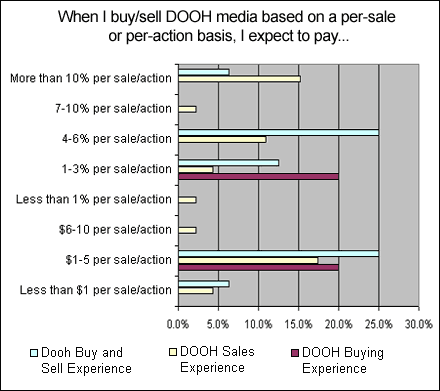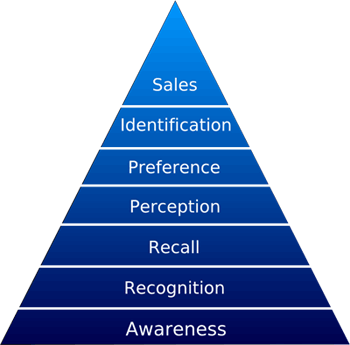Why not use PPA pricing?
As we discussed a few weeks ago, reach is king in the DOOH advertising space. By and large, advertisers want to buy based on reach and sellers want to sell based on reach. While each party acknowledges the many shortcomings of this approach, many organizations have built up A LOT of momentum behind buying and selling media based on how many people are expected to see it. And while that approach makes sense to me for things like TV advertising or roadside billboards (both of which are aggressively pursuing more accurate measurement approaches), DOOH ads always seemed best poised to take advantage of action-based pricing -- because so many DOOH spots feature products that you can actually purchase right in the venue.
Of course, pay-per-action pricing comes with its own set of problems. For one, there has to be a clear and documentable path to purchase, and ad compliance and sales data have to be shared freely between the DOOH network operator and each host venue. As you might imagine, this also poses a special challenge to those networks spanning multiple heterogeneous venues, since the data could come in all sorts of formats, or competing venues might not feel comfortable sharing at all. Then there's the question of pricing. While it's kind of easy to justify reach-based pricing for DOOH networks by comparing it to well-established marketplaces like TV, cable and print ads, you could ask 100 people what they think the appropriate price structure for PPA is and get nearly as many different answers. In fact, if you exclude the 46% of our survey respondents who said they simply didn't know how to price ads this way, the rest of the responses covered a wide range of pricing possibilities:

Assuming you're able to pick a price that works for everyone, and have access to the data needed to reasonably prove an action was caused by a DOOH ad presentation, the burden is fully on the network operator and their content authors/providers to drive completed actions. And I think this is probably going to be the biggest obstacle to PPA gaining significant traction in our industry. With reach-based metrics, you know you're getting "soft" value, in the form of subtly enhanced product awareness and recognition -- you know, the items at the bottom of our much beloved influence pyramid, first introduced in an ROI article from waaay back in 2005:

However, with PPA pricing, if nobody buys that new product you're advertising on your screen, you (the network owner) are on the hook. And I suspect that's a position that most DOOH network owners aren't especially excited to find themselves in.
Is there any upside?
Depite all the drawbacks to PPA pricing, the chart above does suggest that media buyers would be happy paying a decent percentage for ads that actually helped them sell more product, so maybe PPA is best left as a niche tool for DOOH networks that feature high-margin goods and services. Alternatively, I could see it working well in situations where a DOOH network wants to sell spots to many different advertisers to begin with, but only keep the ones that perform. And, of course, it might turn out to be one of those "novelty business model" tactics that gets advertisers to buy in with little risk when there's simply no other way to get them onboard. One of my cardinal rules for DOOH network operators is never give your space away. But a modified "give it away if it's not working, but reserve the right to charge if it does" might -- might -- be acceptable. I'd have to think about that a bit more.
In summary, it seems unlikely that PPA will dethrone any of the reach-based media buying mechanisms. At best, it will come to fill a niche role for situations where reach-based buying is unpalatable or impossible. But what about buying and selling DOOH media based on the number of screens or venues? That's the granddaddy of all DOOH ad sales models, and next week we'll see how our survey respondents feel about it in a 21st century media buying environment.
Does PPA offer anything else of value for DOOH networks? Should the industry push it harder, or let it fall by the wayside? Leave a comment and let us know. (If you're viewing this in your email or RSS reader, click through to /blog to comment.)

 Subscribe to the Digital Signage Insider RSS feed
Subscribe to the Digital Signage Insider RSS feed
Comments
RSS feed for comments to this post